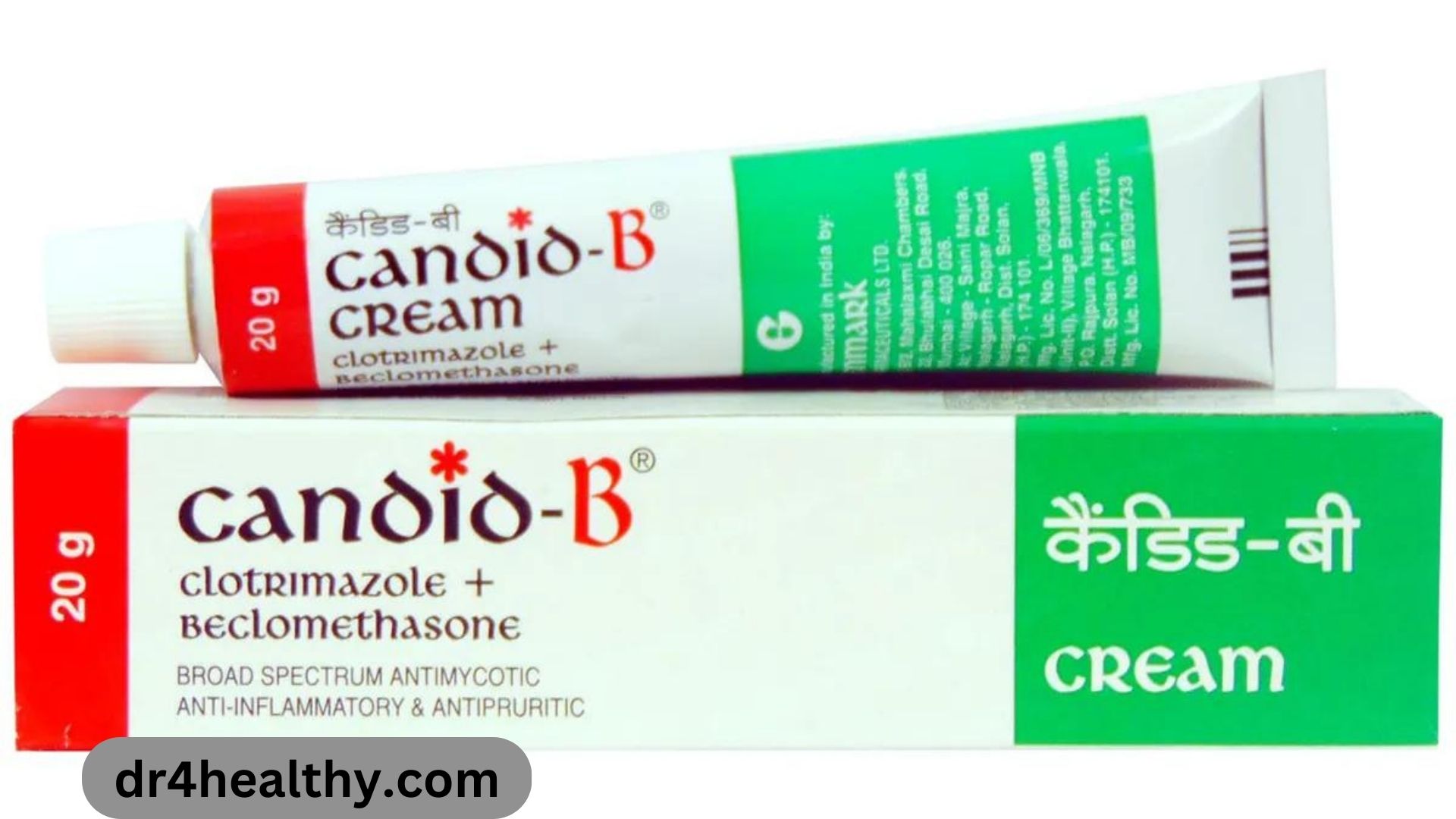Candid B Cream
Product details regarding the 20-gram Candid-B CreamDermatological drugs like Candid-B Cream 20 gm are basically used to treat fungal infections like athlete’s foot ringworm (tinea pedis), groin ringworm (tinea cruris), and body ringworm (tinea corporis). Skin rashes, irritation, redness, and scaling are signs of a fungal infection.
Beclometasone, a steroid, and Clotrimazole, an antifungal, make up Candid-B Cream 20 gm. An antifungal drug called clotrimazole is used to treat a variety of fungal infections, including ringworm, oral thrush, and vaginal yeast infections.
By damaging and penetrating the fungal cell, clotrimazole inhibits the growth of fungi. cell wall. Additionally, jock itch and athlete’s foot are treated with it.
As a member of the corticosteroid class, beclometasone inhibits the synthesis of prostaglandins, which are chemical messengers that cause inflammation, redness, and itching in the affected area.
Redness and itching can be effectively treated with beclometasone. psoriasis (skin cells accumulate and form scales and itchy, dry patches), dermatitis (red, itchy skin), and eczema (inflamed, itchy skin).
Your physician will prescribe the right amount based on your infection. Candid-B Cream 20 g is exclusively intended for topical (skin) use. Rinse with cold water if the medication gets in your mouth, nose, eyes, or vagina.
Like any medication, Candid-B Cream 20 g has typical side effects. Itching, dryness, redness, and a burning sensation are some of these side effects.
Candid B Cream Visit
Benefits of Medicines
Unknown-B Cream Fungal infections, including ringworm of the foot (tinea pedis or athlete’s foot), ringworm of the groin (tinea cruris or jock itch), and ringworm of the body (tinea corporis), are therapeutically treated with 20 gm.
It is made up of two Medications
The steroid Beclometasone and the antifungal Clotrimazole. An antifungal drug called clotrimazole is used to treat fungal infections such as ringworm, oral thrush, and vaginal yeast infections. Because clotrimazole damages and leaks the fungal cell membrane, it prevents the growth of fungi.
Beclometasone is a member of the corticosteroid class. It inhibits the synthesis of prostaglandins, which are chemical messengers that cause swelling, redness, and itching in the affected area. It relieves itching and redness.
Eczema (skin inflammation and itching) and psoriasis (skin cell accumulation) develop into dry, itchy, scale-covered patches, as well as dermatitis (scratchy, red skin).
Adverse Outcomes Candid-B Cream
adverse effects, both major and minor skin rashBlistering beneath the surfaces that is tingly or burning dry and itchy skin skin bruises easily usually hot epidermis
Candid-B Cream Uses
Fungus-induced skin infectionA fungal infection, also known as mycosis, is a fungal-induced skin disease. Candid-B Cream is used to treat a variety of fungal skin infections that cause itching, swelling, and redness.
The Operation of Candid B 0.025/1% Cream 10 GM
The distinct functions of Candid B cream’s two active ingredients, beclometasone dipropionate, and clotrimazole, are what drive its mechanism. The primary mechanism by which clotrimazole works is by breaking down the fungal membrane’s permeability barrier.
The synthesis of ergosterol, a crucial component of the fungal cell membrane that keeps its structure intact, is inhibited by clotrimazole. The fungal cell loses its ability to function normally when ergosterol synthesis is inhibited.
The fungal cell membrane is damaged, which results in death for the organism.
When Candid B cream is applied topically, beclometasone dipropionate enters the skin and attaches itself to a protein found in skin cells called cytoplasmic glucocorticoid receptors. By stimulating the anti-inflammatory genes and inhibiting the growth of pro-inflammatory genes, it activates the glucocorticoid receptor protein.
It lessens the synthesis of chemokines, which are proteins that cause inflammation in the skin, and inflammatory cytokines.
Moreover, beclometasone dipropionate prevents immune cells like neutrophils and macrophages from migrating to the site of inflammation.
It lessens skin inflammation by reducing the number of inflammatory cells at the injection site.
Beclometasone dipropionate’s anti-inflammatory and immunosuppressive qualities aid in lowering skin inflammation and infection-related symptoms.
Take AimsA TEENAGERUsing candid B cream
during pregnancy is not advised, especially in the first trimester. The effects of candid B cream during pregnancy are not well documented. Thus, when pregnant, it should be used with caution.
Breastfeeding: Since there is no expectation of significant maternal absorption, there is little risk to nursing infants from using Candida B cream. Nevertheless, it is advised not to apply Candid B cream to the breasts or any area close to the nipples in order to keep the baby from consuming the drug while nursing.
Acetylalcohol and Candid B Cream: Don’t seem to interact at all. However, it is advised to abstain from alcohol while taking treatments for fungal infections.
Use of Liver Candi B Cream: This should be done carefully if you have
liver damage. Use it as a doctor has instructed.
Kidney: His kidneys are safe when using candied B cream. However, if you have severe kidney disease, it is advised that you see a doctor before using candid B cream.
